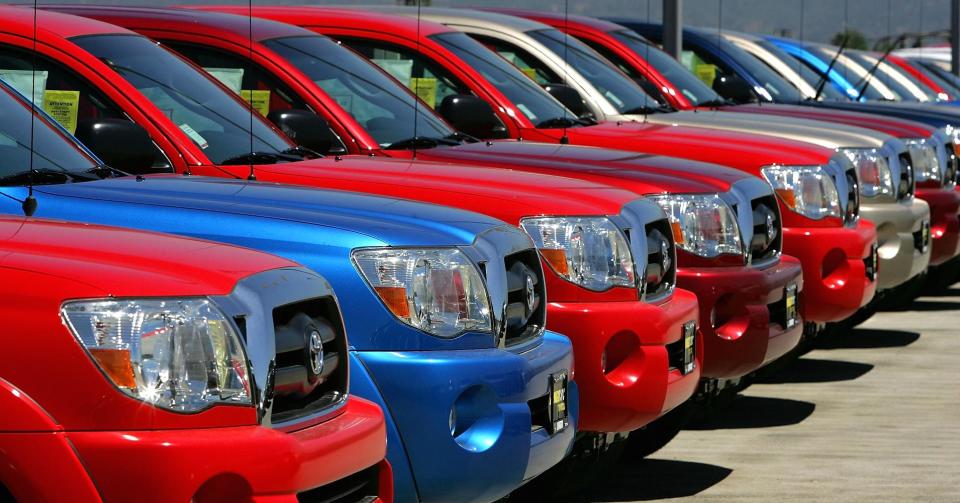'McDealerships' multiply to serve auto-sales boom

U.S. auto sales are about to surpass a dubious milestone.
If this year's blistering sales pace holds up, more than 17 million new cars and light trucks will be sold.
That would not only be an astonishing comeback from the low of around 10 million sold in 2009, when the Great Recession sent Chrysler (FCAM) and General Motors (GM) into a bankruptcy which Ford Motors (F) escaped only by massive borrowing.
It would also be a feat rarely achieved in the history of America's car industry.
Even using the monthly annualized figures, which are more volatile, auto sales have only surpassed the 17-million run rate in a couple of scattered months in the mid-1980s; in most of the heady period from May of 1999 through June 2001; and sporadically during the heavy incentive-driven, loose financing era of late 2001 through mid-2006.
Source: St. Louis Federal Reserve
And it's a high water mark that for a time was thought perhaps out-of-reach for good: the U.S., post-recession, was said to be "entering a new era," evolving away from car-dominated transport; the love affair with the automobile had even possibly come to an end.
Or not.
Auto sales shot back up to the 17 million mark last August for the first time since the recession. They have held above that level in four out of five months through July 2015, and if that pace holds this will either be the strongest or second-strongest full-year sales total on record, after 2000.
The distinction is dubious because of its rarity—and because of concerns that it might once again mark the peak of a broader economic cycle.
Adding to that worry: the return of super-loose auto financing, a flood of now-used high-quality vehicles entering the market, and possibly excessive dealership confidence.
Consider what is now the country's largest Lexus dealership: a 40-acre compound, which opened in July, about a 45-minute drive northwest of Chicago in Arlington Heights, Illinois.
It features not only a showroom and service center, but a 170,000-square-foot main building that "also has a movie theater, playground, massage chairs, gym, golf, putting green and a salon for haircuts, manicures, pedicures and more," according to local press.
Then there are the Audi dealers, "in the throes of a $1 billion building boom," which reportedly includes mega-dealer Carl Sewell's plans for a four-story Audi store with 275,000-square-feet of space just south of Houston, Texas.
"Drive down any thoroughfare in the U.S. and you will see multiple buildings, shiny and new, all prepared to meet the growing demand for vehicles," said "Fast Money" trader Brian Kelly in a recent market note.
Remember the McMansion? These, perhaps, are the "McDealerships."
Read More Ford, GM, Fiat Chrysler beat US August sales estimates
The trouble, said Kelly, is that the American auto industry is not in the midst of a paradigm shift to a higher sales rate so much as a one-time event driven by pent-up demand and an aging vehicle fleet.

 Yahoo Autos
Yahoo Autos 
